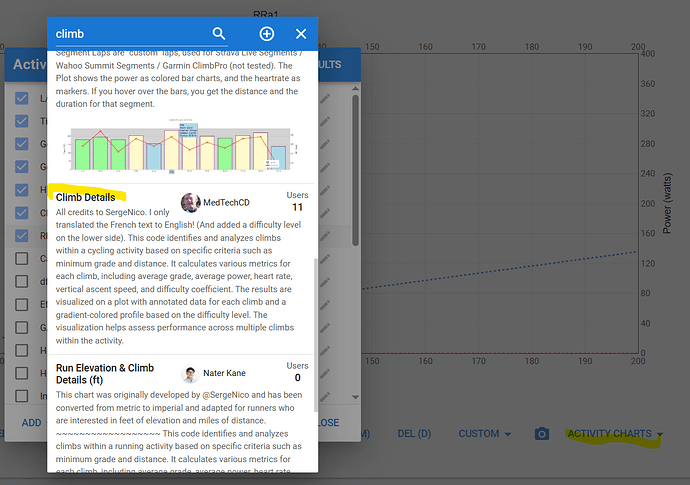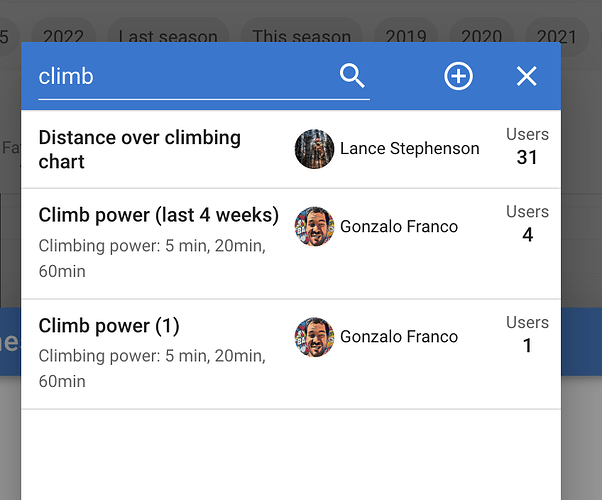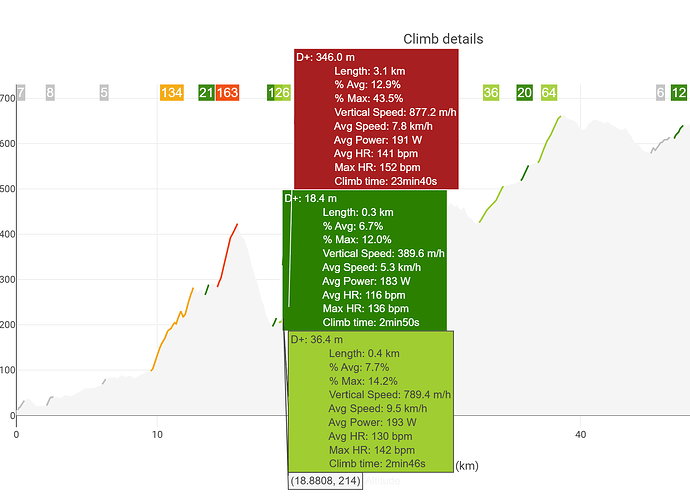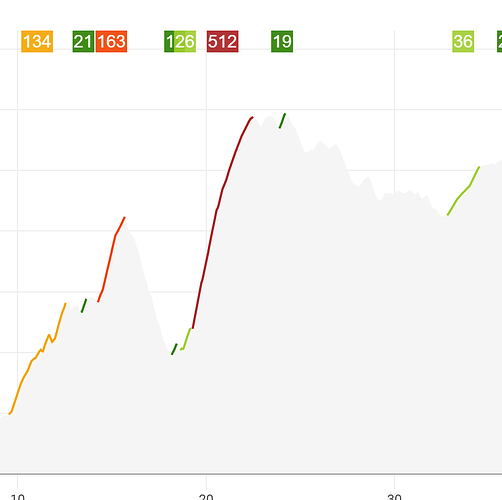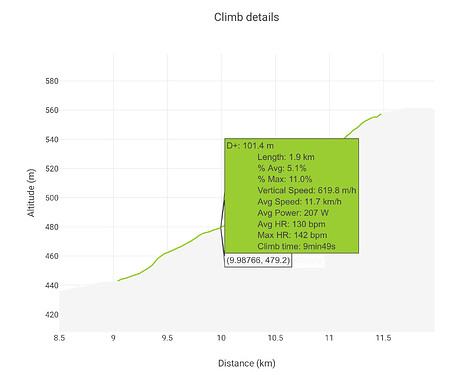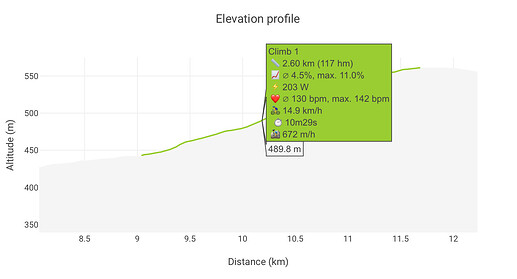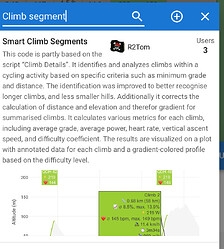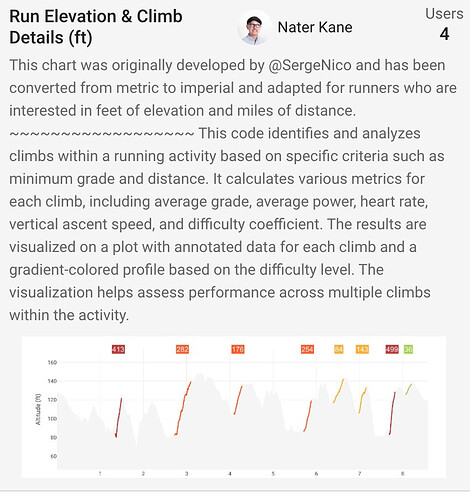It’s still there. You may need to add some search text to make it visible.
I was able to find it under the Activity Charts section so it is definitely there. Works well for runs too, really nice script
This looks great, thank you @MedTechCD and Serge.
Can you help me understand what the figures are across the top - presumably some sort of TSS related score for each climb (but not TSS?)
I also wondered what was happening in the first image below
where my cursor seems to select three climbs at once. I wondered whether this was because the chart showed all three climbs which were part of one longer climb, but the overall picture seems to suggest different?
But this chart looks like it’ll be super useful, thank you both.
This is a well-known approximate assessment of the severity of climbs. It is the product L*P^2, where L is the length in km and P is the average gradient of the climb in percent.
You can think of it as “perceived altitude meters”.
Ah yes, thank you, that makes sense.
Do you also know what the D+ figure at the top of each box refers to? I wondered if it meant total altitude gain in that climb, but that doesn’t quite work out against length of climbs and average gradient. So in the lowest box above, D+ is 36.4; at an average gradient of 7.7% over 0.4 km, I’d have gained 30.8m, so those two figures don’t align?
It should be the elevation gain.
36,4m / 7,7% = 472,727 m
That’s probably rounded down to 0.4 km.
But there are still some mistakes, not huge, but I am to nerdy to accept ![]()
The climb starts at kilometer 9.1 and ends at kilometer 11.5, making it 2.4 kilometers long. However, some details are inaccurate. For instance, the elevation gain (D+) from 440 m to 560 m is actually 120 m, not 101 m. This discrepancy arises because smaller climbs are combined into one larger climb, ignoring the flat sections in between.
Big thanks to Serge for creating that and @MedTechCD for the translation! I adopted the idea of showing detailed segment information by hovering over the chart and made the necessary corrections. However, the hill detection system works slightly differently, so the segments it generates won’t exactly match the originals. Still, it shows the “correct” values for the segments.
You can take a look, if you search for “Climb Segment”
Ah, forgot to translate. It´s indeed altitude gain, from Denivellation in French.
I also have made a copy of SergeNico’s chart that I made a few changes to, firstly I modified it for runners, converted to US Imperial units (for the most part), changed to english, minor layout changes. etc.
I simply sent him a direct message to thank him, as well as ask for his consent to publish my version.
